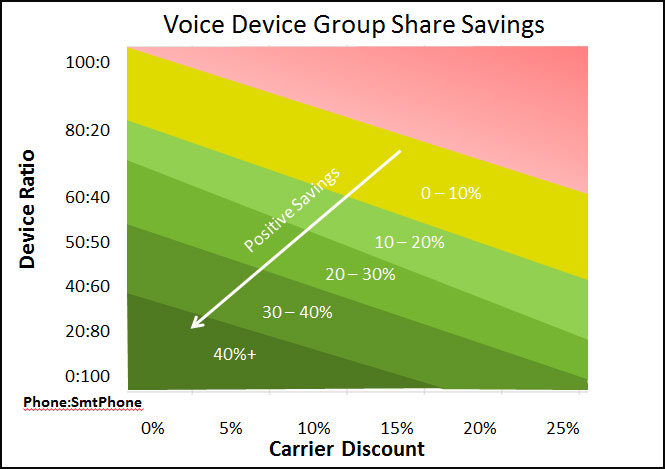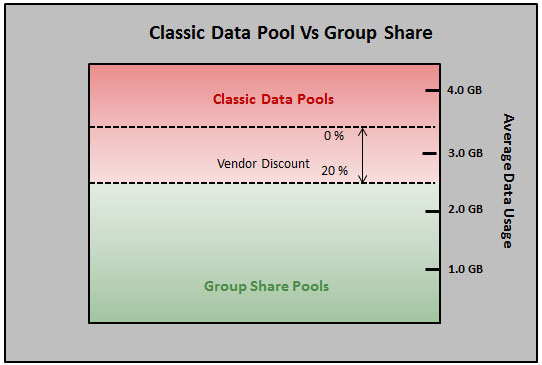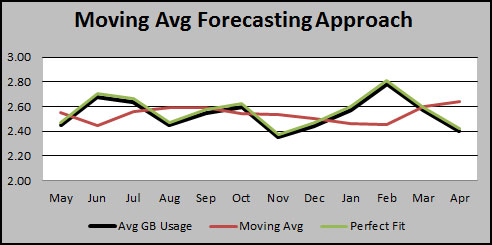Group Share Savings with Voice Devices
Is the Cost of Unlimited Voice and Text too High?
With the boundaries of new AT&T Mobile Share and Verizon Share Everything pool offerings defined by data limitations (30GB, 40GB, 50GB), one may erroneously conclude these new plans aren’t well suited for older basic phones. Additionally, since these plans include unlimited voice and text it raises the question as to whether you are paying for capability you might only use on a limited number of voice devices. These new pooling options, which we call ‘puddles’ due to their cap maximum of 25 devices, are well suited to SmartPhone devices because the average data usage of these devices is typically under 2GBs fitting easily into 50GB for 25 devices group share environments. One might ask if the price is right for the voice component of SmartPhones and whether it makes any sense for non-data voice devices at all. It turns out there are 3 general factors that influence whether you will see savings or not by shifting from classic voice pooling to new group share puddles.
Most business mobility management strategies today include voice pooling as the lowest cost approach to managing voice devices. As with the data pooling described in last week’s tip, one factor that does determine the savings cutover point is the carrier discount percentage. Because the line access charge for each group share device is not discounted but typically your voice and data access plans in classic pooling are, you will find that savings are greatest with group share at the lowest discount rates and become marginalized at higher discount rates. The second factor influencing group share savings is the ratio of your company’s deployment of basic phones to SmartPhones. Once SmartPhones have become the majority of your deployed devices, the savings start to shift dramatically to group share configurations as indicated in the chart below independent of discount.
The final factor influencing whether you will experience savings or not is the price point you are able to achieve through your existing voice pool optimization. The chart above was constructed with an assumption of a monthly list-price cost of $42.50 per device for both voice and text. This represents what you might typically be paying for a pool averaging less than 250 minutes/month with a mix of text plans. The cost of a non-data voice device in group share configurations is $30. It would seem obvious that $30 for unlimited voice and text would always win versus a $42.50 list price but phones need to bear some cost burden of the unused data in a puddle to accurately compare cost alternatives. The chart above does make some assumptions so your ‘mileage will vary’ but it does provide some general guidelines that will hold true. Namely that lower discounted situations with higher concentrations of SmartPhones will bring you the largest savings in group share configurations. This chart characterizes savings benefits you might see with Group Share ‘puddles’ based on your ratio of basic phones to SmartPhones.


